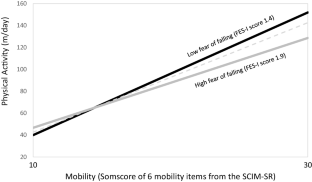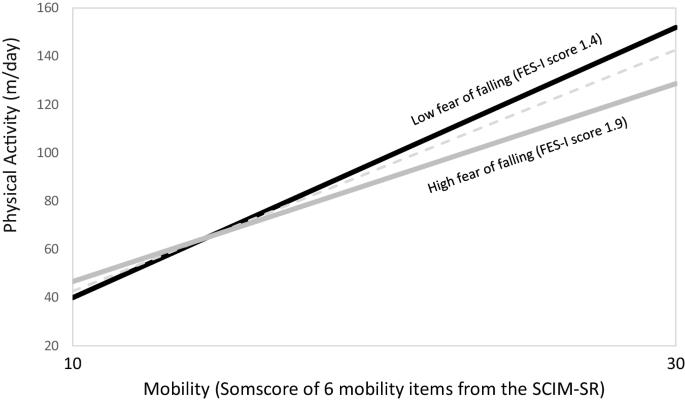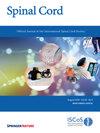脊髓损伤患者在住院康复后第一年的体育活动相关性。
IF 2.1
4区 医学
Q3 CLINICAL NEUROLOGY
引用次数: 0
摘要
研究设计研究目的:纵向队列研究:研究脊髓损伤(SCI)患者在住院后第一年康复期间的行动能力与体力活动(PA)水平之间的纵向联系,并探讨哪些其他因素也与体力活动水平有关:环境:三家脊髓损伤专业康复中心和荷兰社区:方法:纳入 47 名近期接受过脊髓损伤且具有活动功能的成年人。所有患者均为运动性不完全损伤,49%为四肢瘫痪,平均年龄为 55 ± 13 岁。在出院前以及出院后 6 个月和 12 个月,测量了以加速度计为基础的全天 PA 持续时间,以及自我报告的活动能力水平、行走时的体力消耗、疼痛、疲劳、抑郁情绪症状、跌倒恐惧、运动自我效能以及对 PA 的态度。所有数据均采用广义估计方程进行纵向分析。模型对年龄、病变程度和受伤后时间进行了校正:结果:活动能力与体力活动水平有纵向关系(β:4.5,P 2:41%)。此外,行走时的用力程度较低(β:-5.6,P在住院康复后的第一年中,行动能力、行走时的体力消耗、对跌倒的恐惧以及运动自我效能似乎与行动不便的 SCI 患者的 PA 水平相关。采用跨学科方法针对这些因素进行治疗,可提高这类人群的运动量水平。本文章由计算机程序翻译,如有差异,请以英文原文为准。


Correlates of physical activity in ambulatory people with spinal cord injury during the first year after inpatient rehabilitation
Longitudinal cohort study. Examine the longitudinal association between mobility and level of physical activity (PA) and explore which other factors are also associated with level of PA in ambulatory people with Spinal Cord Injury (SCI) during the first-year post-inpatient rehabilitation. Three SCI-specialized rehabilitation centers and the Dutch community. Forty-seven adults with recent SCI and ambulatory function were included. All had motor incomplete lesions, 49% had tetraplegia, and the mean age was 55 ± 13 years. Duration of accelerometry-based all-day PA and self-reported level of mobility, exertion of walking, pain, fatigue, depressive mood symptoms, fear of falling, exercise self-efficacy, and attitude toward PA were measured just before discharge from inpatient rehabilitation and 6 and 12 months after discharge. All data were longitudinally analyzed using generalized estimating equations analyses. Models were corrected for age, lesion level, and time since injury. Mobility was longitudinally associated with level of PA (beta: 4.5, P < 0.001, R2: 41%). In addition, lower levels of exertion of walking (beta: −5.6, P < 0.001), fear of falling (beta: −34.1, P < 0.001), and higher levels of exercise self-efficacy (beta: 2.3, P = 0.038) were associated with higher levels of PA. Exertion of walking and fear of falling were associated with level of PA independent of mobility. Mobility, exertion of walking, fear of falling, and exercise self-efficacy seem to be correlates of level of PA in ambulatory people with SCI during the first year after inpatient rehabilitation. Targeting these factors using an interdisciplinary approach may enhance levels of PA in this population.
求助全文
通过发布文献求助,成功后即可免费获取论文全文。
去求助
来源期刊

Spinal cord
医学-临床神经学
CiteScore
4.50
自引率
9.10%
发文量
142
审稿时长
2 months
期刊介绍:
Spinal Cord is a specialised, international journal that has been publishing spinal cord related manuscripts since 1963. It appears monthly, online and in print, and accepts contributions on spinal cord anatomy, physiology, management of injury and disease, and the quality of life and life circumstances of people with a spinal cord injury. Spinal Cord is multi-disciplinary and publishes contributions across the entire spectrum of research ranging from basic science to applied clinical research. It focuses on high quality original research, systematic reviews and narrative reviews.
Spinal Cord''s sister journal Spinal Cord Series and Cases: Clinical Management in Spinal Cord Disorders publishes high quality case reports, small case series, pilot and retrospective studies perspectives, Pulse survey articles, Point-couterpoint articles, correspondences and book reviews. It specialises in material that addresses all aspects of life for persons with spinal cord injuries or disorders. For more information, please see the aims and scope of Spinal Cord Series and Cases.
 求助内容:
求助内容: 应助结果提醒方式:
应助结果提醒方式:


